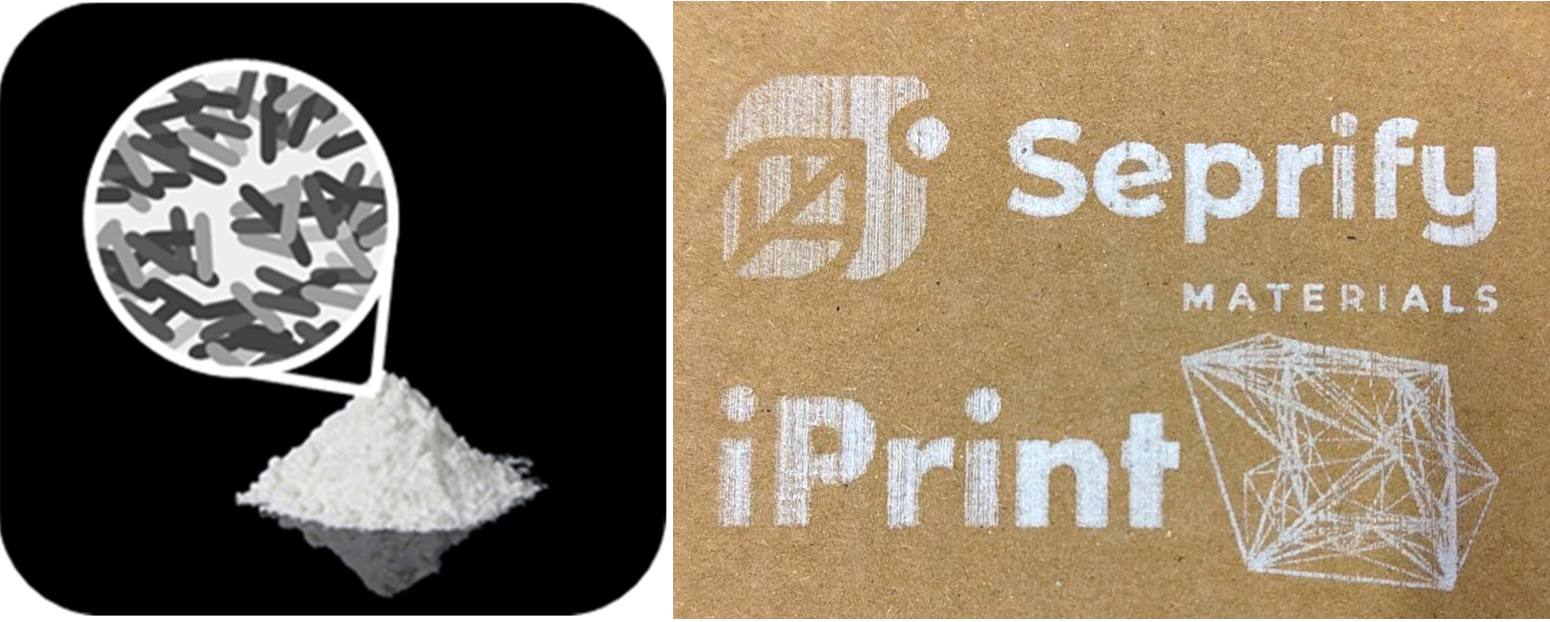Whitecelljet - Inkjet Printing Of New Generation Cellulose White Pigments
Ingénierie et Architecture

Typical white pigments used in food, pharmaceuticals, clothes, paintings, etc. are usually based on titanium dioxide (TiO2), a material that is toxic for the environment and is considered carcinogenic to humans. The EU has already introduced a ban on use of TiO2 in food applications, with other industries grappling for change to meet regulatory approvals and public acceptance. Due to the toxicity of TiO2 and the environmental concerns in regard to its production, other color forming systems are sought after. TiO2 achieves its high performance through a unique material property, its high refractive index. For sustainable biomaterials, the refractive index is limited. However, scattering efficiency (and thus a diffusive white appearance) can also be enhanced by optimizing size and shape of the scattering elements, e.g. the scattering particles and their assembly.
In contrast to absorbing pigments, such structural color can be generated from a wide range of materials. Seprify has developed a unique material based on cellulose (the main biopolymer on earth) to obtain highly white appearances.
By carefully organizing submicron-sized particles, for example made of cellulose, it is possible to generate white color. The whiteness that arises from cellulose microparticles is isotropic and truly competitive with the established solutions based on TiO2 particles, which is a major advantage compared to purely periodic systems
However, an inkjet ready-to-print ink is still missing and would lead to a major breakthrough in the digital printing of a sustainable and environment friendly white ink.
Furthermore, by carefully tuning the synthesis of cellulose microparticles, it is possible not only to form white appearance but also, in principle, cellulose-based pigments that generate red, green or blue color upon irradiation with white light through a mechanism called interference.
Based on recent results from internal research projects carried out at HEIA-FR/ iPrint, the main objective is to develop an inkjet printable ink based on cellulose white pigments (CWP) with an optimized white response.
With this multidisciplinary project, we aim at developing a new and sustainable white ink for inkjet printing based on the advanced control over cellulose white pigment formulation and manufacture that Seprify can offer. These as-formulated ink systems should show the performance or even outperform standard titanium dioxide loaded inks in terms of white opacity and stability; the current, but toxic, standard of today’s industry when it comes to white inks.
Un appel à projets destiné aux entreprises pour stimuler leur innovation, leur compétitivité et leur durabilité
Le projet décrit ci-dessus fait partie d'un appel à projets extraordinaire intitulé "Innovation, compétitivité et durabilité", lancé par le domaine Ingénierie et Architecture de la HES-SO. Ces fonds sont destinés aux professeur-es proches des sociétés de services et d'entreprises suisses. Les hautes écoles concernées par cet appel à projets sont :
- HE-Arc Ingénierie ;
- Haute école d'ingénierie et d'architecture de Fribourg - HEIA-FR ;
- Haute école du paysage, d'ingénierie et d'architecture de Genève (HEPIA) ;
- HES-SO Valais-Wallis - Haute Ecole d'Ingénierie - HEI ;
- Haute Ecole d'Ingénierie et de Gestion du Canton de Vaud - HEIG-VD ;
- CHANGINS - Haute école de viticulture et œnologie.